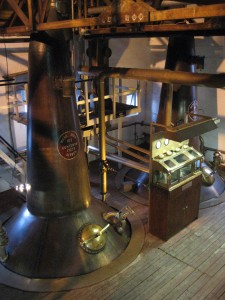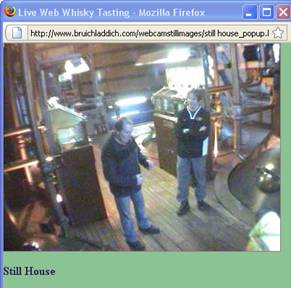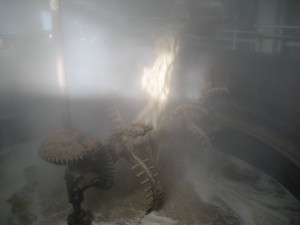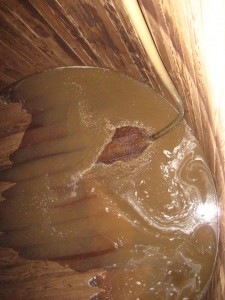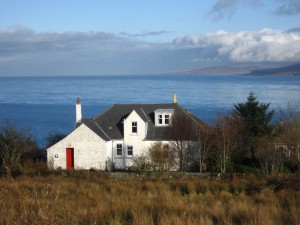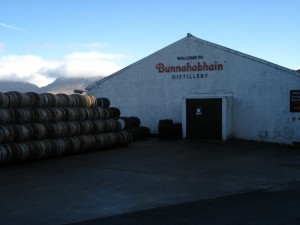I have been hot, hot, hot the past couple of days! No, I’m not refering to a great haircut from Shannon or a new Ben Sherman overcoat. My spirited opening sentence has to do with just that: spirit. My ongoing Bruichladdich education took me to the still room, where fermented wash is distilled and distilled again to pull off fine spirit nearing 70 percent alcohol.
Neil and Budgie, the two stillmen, took the time to walk and rewalk me through Bruichladdich’s distillation process. Unlike my time in the mash house, which was more observational than active, I was right in the heat of things, so to speak. With still temperatures hot enough to bring more than 7,000 liters of liquid to a frothy boil, the still house is an ideal place to be during the Islay winter.
Budgie put me to work straight away, managing the steam flow to the wash still, weilding big, heavy handles to help him turn valves on and off, watching the quality of the foreshots, low wines and spirit using hydrometers in the spirit safes…in short, I was making whisky.
I’ve been to several distilleries where the still operations are run by computer and monitored by the still men. They still produce fine spirit, and the still men certainly know their jobs. However, I had the feeling with Budgie and Neil that the stills, safes and every last valve were more like well-recognized old friends than machinery. Both men run the stills in slightly different ways, in the same manner PG and Peter ran the mashings with subtle differences.
Jim McEwan said that’s the essence of Bruichladdich: it’s a handcrafted whisky that exudes the diversity of the craftsmen behind it. If Bruichladdich’s standard bottlings taste a bit different from one year to another, that’s a good thing, Jim believes, because it’s a return to the handcrafted legacy whisky-making fore-bearers left us. The only consistency Jim wants is in a high quality single malt hitting the bottle.
Time in the still room really helped me watch my “baby” grow up. The spirit that we distilled was from some of the mash that I helped turn into wort and watched (and smelled…mmmm) ferment. Today, we helped it grow up into Bruichladdich spirit. The next step is to watch it mature, and in order to do that, I need to….well, you’ll read about it tomorrow.

